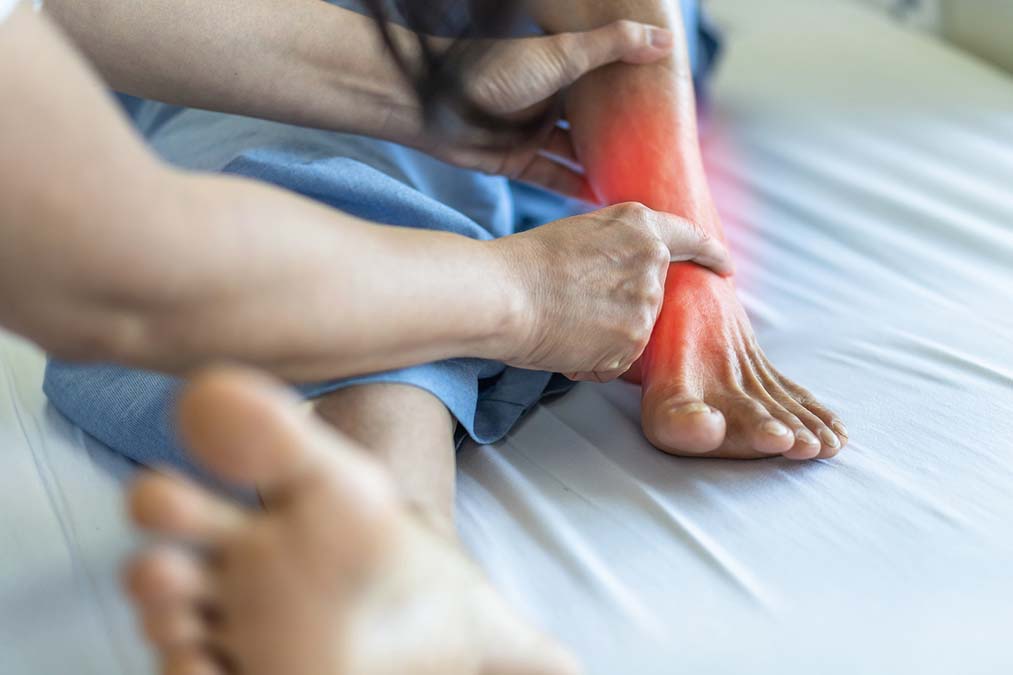 The word “needle” conjures up negative images for many people, especially when it comes to medicine. It’s perhaps the most universally hated medical device in the world. After all, blood tests are painful and inflict unnecessary stress.
The word “needle” conjures up negative images for many people, especially when it comes to medicine. It’s perhaps the most universally hated medical device in the world. After all, blood tests are painful and inflict unnecessary stress.
Gout sufferers would be all too familiar with needles and blood tests.
But the good news is that using needles isn’t the only way to diagnose the condition.
New research published in Nature Biotechnology shows that this torture isn’t necessary at all.
One of the biggest problems with sweat sensors is that they require too much sweat to test accurately. They cannot measure chemicals precisely in the tiny amounts of liquid we sweat out.
Secondly, those that are accurate are very expensive.
Scientists have worked out how to make cheaper sensors from graphene in which they use commonly available carbon dioxide lasers to engrave the tiny channels into which the fluids go.
Their sensors can measure respiratory and heart rates that can help diagnose heart disease and fitness-related conditions, blood uric acid for gout diagnosis, and blood tyrosine for liver disease and metabolic disease diagnosis.
They tested gout patients and people without gout to compare their readings. The sensor accurately measured the gout patient’s uric acid to be higher than that of the healthy volunteers.
To ensure that the sensors were right, the scientists drew blood from these subjects and compared their blood readings with their sweat sensor readings. The sensors showed the same readings as the blood tests.
They next tested the sweat of healthy gout-free volunteers while they were fasting and again after they ate a meal packed with purines, a chemical in food that our bodies break down to uric acid.
The sensor correctly measured the higher uric acid levels after the meals.

 Overcoming IBD
Overcoming IBD Multiple Sclerosis
Multiple Sclerosis Banishing Bronchitis
Banishing Bronchitis Gum Disease Gone
Gum Disease Gone Overcoming Onychomycosis
Overcoming Onychomycosis Neuropathy No More
Neuropathy No More The Prostate Protocol
The Prostate Protocol Brain Booster
Brain Booster
 Ironbound
Ironbound
 Solution for Shingles
Solution for Shingles
 The Bone Density Solution
The Bone Density Solution
 The Ultimate Healing Protocol
The Ultimate Healing Protocol
 The Parkinson's Protocol
The Parkinson's Protocol
 The Chronic Kidney Disease Solution
The Chronic Kidney Disease Solution
 Overthrowing Anxiety
Overthrowing Anxiety The Fatty Liver Solution
The Fatty Liver Solution The Hypothyroidism Solution
The Hypothyroidism Solution
 The End of Gout
The End of Gout The Blood Pressure Program
The Blood Pressure Program
 The Oxigized Cholesterol Strategy
The Oxigized Cholesterol Strategy
 Stop Snoring And Sleep Apnea Program
Stop Snoring And Sleep Apnea Program
 The Arthritis Strategy
The Arthritis Strategy The Vertigo & Dizziness Program
The Vertigo & Dizziness Program The 3-Step Diabetes Strategy
The 3-Step Diabetes Strategy Hemorrhoids Healing Protocol
Hemorrhoids Healing Protocol The Erectile Dysfunction Master
The Erectile Dysfunction Master Weight Loss Breeze
Weight Loss Breeze The IBS Program
The IBS Program The Insomnia Program
The Insomnia Program The Migraine and Headache Program
The Migraine and Headache Program The Neck Pain Solution
The Neck Pain Solution The Menopause Solution
The Menopause Solution The Ejaculation Master
The Ejaculation Master The TMJ Solution
The TMJ Solution The Acid Reflux Solution
The Acid Reflux Solution The Fibromyalgia Solution
The Fibromyalgia Solution The Psoriasis Strategy
The Psoriasis Strategy